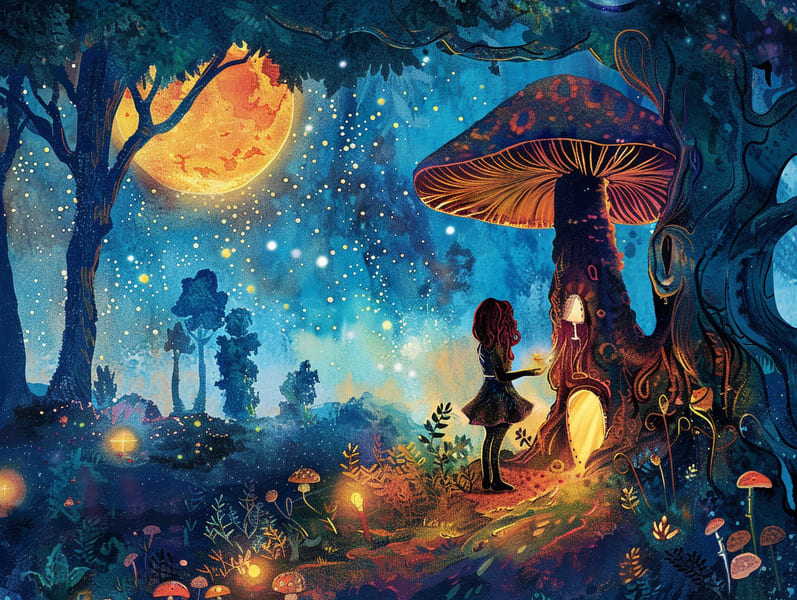A Brief History of Vintage Fairy Tales with the Invariable Allure.
A Brief History of Vintage Fairy Tales with the Invariable Allure.
Blog Article

Historical fairy tales have old origins. These narratives have been narrated from one generation to the next far before they were ever published. They sprang from a variety of societies, including Eastern traditions. They were initially transmitted among elders, often carrying themes and messages concerning the societal norms and beliefs of the time.
The Grimm brothers, Jacob and Wilhelm Grimm, were among the first to collect many of these beloved stories. Their compilation, "Grimm's Folk Tales," included narratives like "The Story of Cinderella," "Little Brother and Little Sister," and "The True Story of Snow White," which have since become staples in the world of iconic fairy tales. Similarly, Hans Christian Andersen's charming fairy tales, such as "The Mermaid," and "The Duckling that Could," have won hearts worldwide, ensuring their place in the pantheon of timeless fairy tales.
Even though they are old, classic fairy tales remain as impactful as ever, especially as nighttime stories for kids. These whimsical stories are now available in multiple formats, including beautifully illustrated books, whimsical animations, and internet fairy tales.
Their lasting appeal can be attributed to several magical reasons:
Life Lessons: Classic fairy tales often impart important moral lessons. Tales like "The Boy Who Cried Wolf" teach the virtue of being truthful, while "The Race of the Tortoise and the Hare" point out the merits of perseverance and meekness. These tales offer kids clear distinctions between virtue and vice, developing their moral compass in a kind yet meaningful way.
Kindness and Comprehension: Old fairy tales frequently present figures facing tests and troubles, inciting children to identify with their struggles and support their triumphs. For instance, "Beauty and Her Beast" conveys the importance of seeing beyond the surface to see the true character of a character, nurturing empathy and knowledge.
Cultural Understanding: Many traditional fairy tales are saturated in the cultural contexts from which they blossomed. Reading these stories can provide intriguing perspectives into different ways of life, strengthening a sense of world understanding and perception.
Inventiveness and Fantasy: The magical elements in fairy tales—magical spells—inspire children’s fantasies. These narratives transport readers to magical realms, unleashing imaginative dreams and a sense of wonder that lasts a lifetime.
Traditional fairy tales are not only bewitching but also didactic. They serve as magical tools in cultivating various intellectual and emotional capacities in children. When ancient fairy tales are read aloud, they advance linguistic abilities by showing new linguistic elements and complicated sentence structures. This practice also cultivates listening abilities and mental focus, as little ones remain attentive, ready to see what happens next.
Furthermore, analyzing the themes and characters of traditional fairy tales can enhance logical thinking and logical thinking. Children are guided to find patterns, expect results, and make sense of cause and effect. These examinations also aid the young speak out their thoughts and feelings, cultivating their emotional intelligence.
In today’s information age, the accessibility of digital fairy tales has made these stories more within reach than ever. Websites and applications share broad selections of famous fairy tales that can be accessed or played anytime, anywhere. Fairy tales told out loud are particularly widespread, providing an immersive method for little ones to delight in these whimsical stories. Narrated books and read-to-me stories guide characters and settings to life, often paired with spellbinding harmonies and soundtracks that enrich the story adventure.
The timeless allure of traditional fairy tales lies in their ability to shift to today's world while maintaining their key morals. Contemporary reinterpretations of these narratives often feature more different characters and modern settings, making them relevant to today’s audience. However, the core values of gallantry, kindness, and fair-mindedness remain unchanged, continuing to affect readers of all ages.
Timeless fairy tales also offer a sense of assurance and predictability. They bequeath a organized narrative with a definite beginning, middle, and end, often wrapping up with the wrap-up of conflicts and the triumph of morality over wickedness. This assuredness can be calming for young ones, proffering a sense of steadiness in an ever-changing world.
Ancient fairy tales continue to captivate and coach new generations, maintaining their appeal and value in modern society. As kids' bedtime tales, they afford here a perfect blend of fascination and comprehension, enriching moral values, empathy, and creativity. The availability of internet fairy tales and the well-liked nature of fairy tales read out loud confirm that these traditional stories remain within reach to new generations.
By holding onto and communicating these tales, we continue to extol the rich tapestry of lore and cultural heritage. Whether you are perusing a vividly illustrated book, enjoying a web-based collection, or hearing an read-aloud book, the grandeur of classic fairy tales is always within reach. These tales remind us of the everlasting force of narratives and its ability to draw us together across epochs and places.
Regardless if you are reading a gorgeously illustrated book, experiencing a electronic library, or hearing an sound book, the elegance of classic fairy tales is always within reach.
These fairy tales point out of the persistent power of fairy tales and its ability to join us across centuries and lands, casting a charm that charms and informs alike.